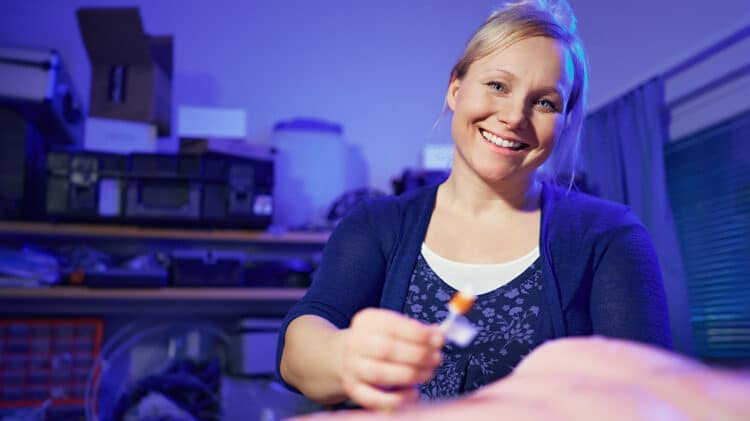
Microwave Biosensors for Non-Invasive Skull Fracture Detection
Skull fractures are often caused by falls, car accidents or sports injuries. They can be serious conditions that need to be treated quickly. Traditional methods such as CT scans and X-rays work well but have drawbacks. They expose patients to radiation and can be difficult to access in remote areas or in emergency situations.
Researchers at the University of Oulu – Mariella Särestöniemi, Daljeet Singh, Mikael von und zu Fraunberg and Teemu Myllylä – are investigating a new method. They are using microwave (MW) biosensors to detect skull fractures non-invasively and without ionising radiation. MW sensing can also be used to monitor the healing process of skull fractures. Their work, part of the 6GESS research initiative, aims to make healthcare more accessible and efficient, contributing to a 6G-enabled sustainable society. As Mariella Särestöniemi explains, “Our goal is to offer a portable, safe complementary approach to traditional imaging, especially in emergency and remote situations, where quick diagnosis is critical.”
Microwave technology in medical diagnostics
Microwave technique has demonstrated significant potential for use in various medical monitoring and pre-diagnostic applications. These applications could feasibly be integrated into portable devices, offering supplementary to traditional imaging techniques. MW technique uses the unique properties of human tissue to identify abnormalities such as bone fractures. This low-cost, non-ionising method, which is possible to be applied in portable devices, is ideal for point-of-care diagnostics. It could reduce the need for hospital-based imaging, particularly when monitoring the healing process
Innovative Research by the University of Oulu Team
Mariella Särestöniemi’s team used MW biosensors to detect linear skull fractures with high accuracy. This could change emergency medical care and enable rapid assessment outside hospitals. The study uses realistic human head models and two types of antennas—a flexible monopole for contact sensing and a cavity-backed directional antenna for non-contact sensing. The results show that MW technology can detect small fractures less than 1 mm wide, which is a breakthrough in non-invasive diagnostics.
Simulation and Experimental Validation
The team conducted simulations using different realistic skull tissue models. They investigated the optimal frequency band for fracture detection in the frequency range 2-10 GHz. They saw clear differences in the antenna’s reflection coefficient (S11) and transmission parameter (S21) in the presence of fractures, especially at frequencies around 5 GHz and 9.8 GHz.
To confirm the results, they tested a real human skull with tissue-mimicking phantoms. The experiments confirmed the simulation results, demonstrating that the microwave (MW) technique can accurately detect fractures. According to Särestöniemi, “These findings bring us one step closer to making point-of-care diagnostics more accessible, particularly in areas where advanced imaging is not available.”
This research provides support for the advancement of portable diagnostic devices, which could be used in ambulances for pre-diagnostics, in remote areas, or even at home to monitor the healing process of fractures, improving access to healthcare.
Towards a 6G-Enabled Sustainable Society
This research aligns with the goals of the 6GESS project. The project envisions a society where 6G technology enhances human well-being and sustainability. Integrating microwave sensing into a 6G network could facilitate real-time transmission of health data and remote diagnostics, reducing the strain on healthcare facilities and promoting a more sustainable healthcare system.
Challenges and Future Directions
While the results are promising, challenges remain. The team found small discrepancies between simulations and real-world tests. These were due to variations in dielectric properties and limitations of current antenna prototypes. To address these issues, they plan to refine antenna designs and explore advanced data analysis techniques. Machine learning could help improve diagnostic accuracy.
The team’s future research will concentrate on enhancing MW sensing robustness. This will entail the utilisation of more advanced models and a broader array of antennas. Additionally, the team will take into account individual variances in tissue properties and employ more realistic skull phantoms to replicate clinical conditions even better.
For a detailed understanding of this research, read the full study by Mariella Särestöniemi, Daljeet Singh, Mikael von und zu Fraunberg, and Teemu Myllylä titled “Microwave Technique for Linear Skull Fracture Detection—Simulation and Experimental Study Using Realistic Human Head Models” in the journal Biosensors.